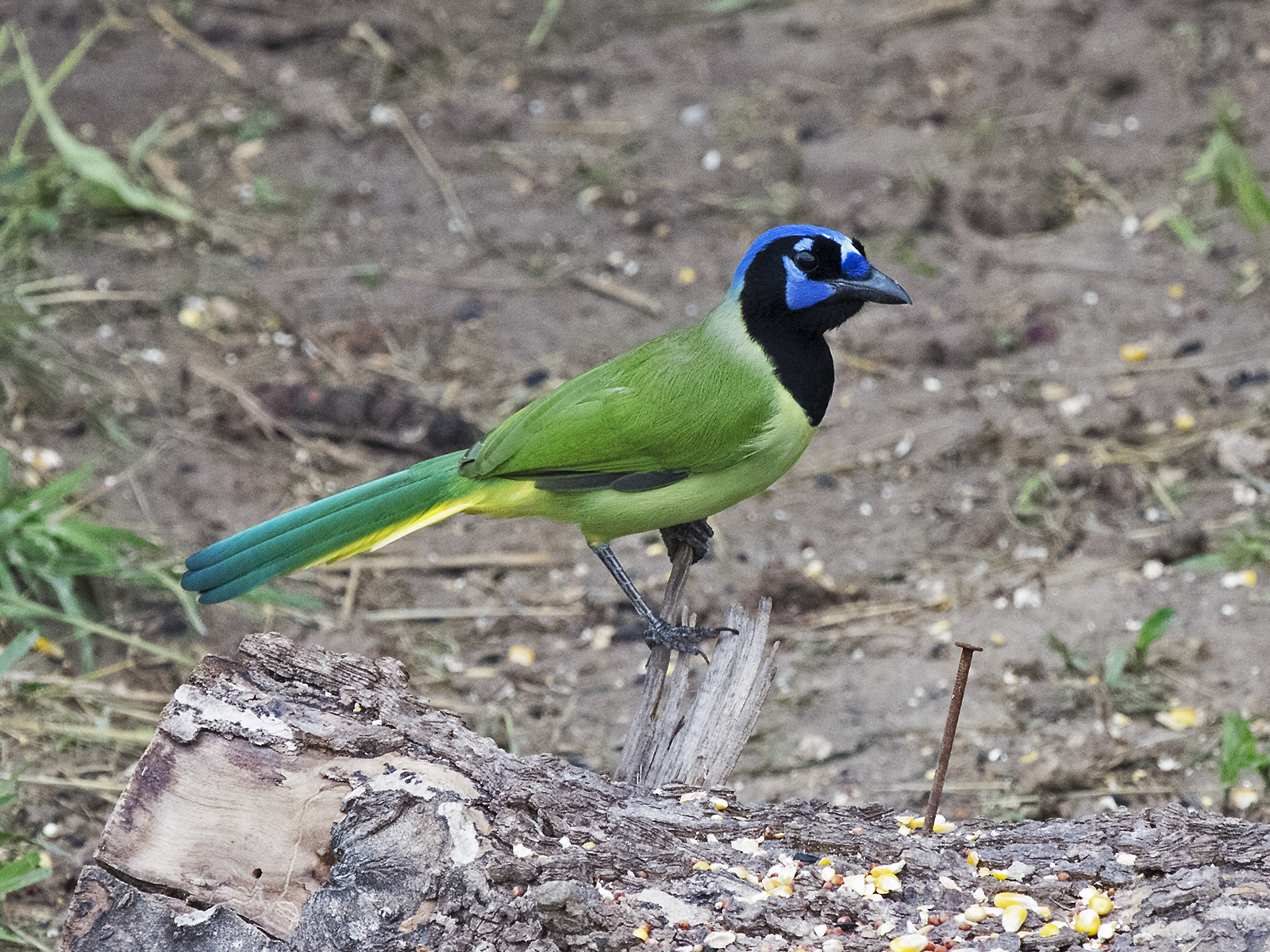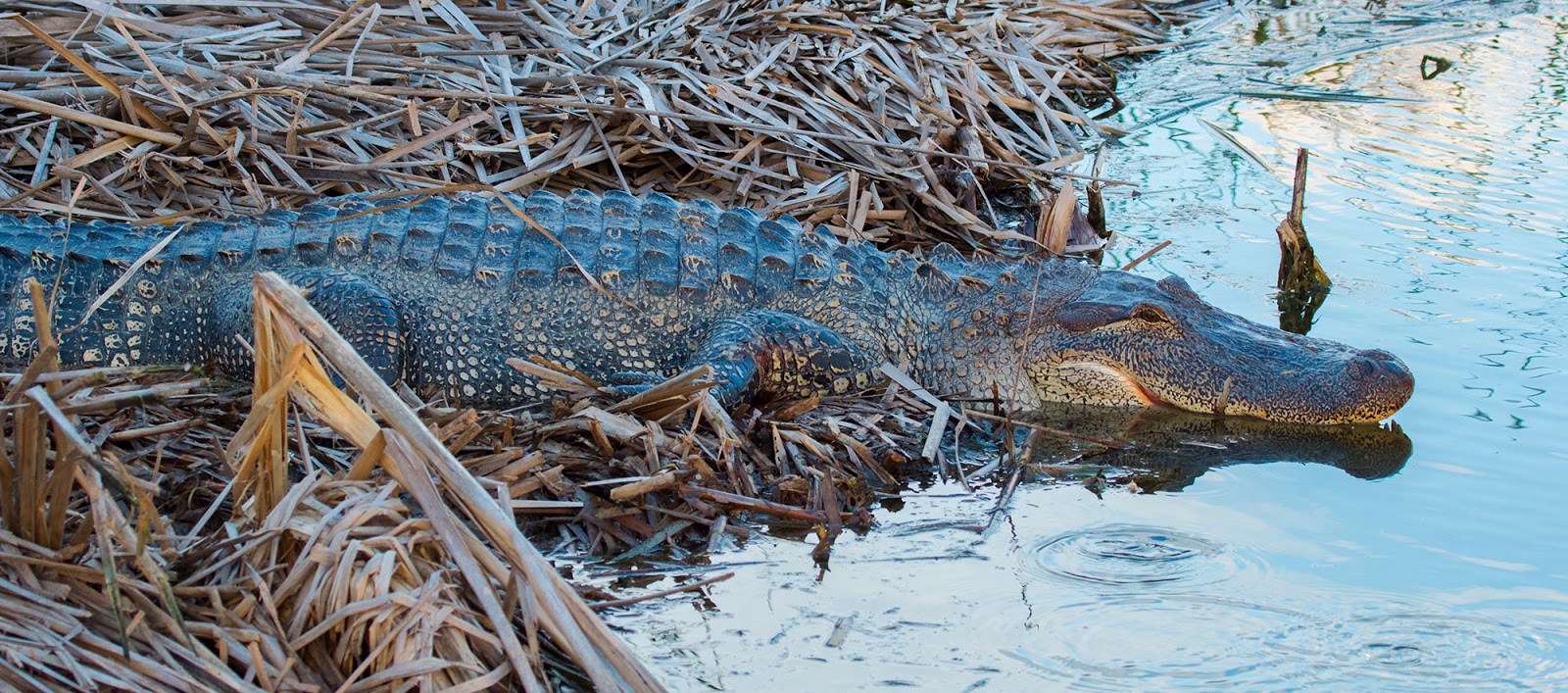As I described in an earlier post, our strategy of staying at
Goose Island State Park on this birding vacation proved to be a mistake as we endured swarms of mosquitoes with little birding in return. In my attempt to briskly walk the nature trails - not recommended without full netting - I heard several White-eyed Vireos but saw nothing. I also donned the netting and fired up the ThermaCELL to sit at the bird feeding station which was less infested with mozzies.
Black and White Warbler - BAWW - While watching the feeder station at GISP, this little warbler made a brief appearance to bath in the water feature. The Black-and-White is hard to miss with its distinct chain-gang convict garb.
 |
| ISO-800, 400mm, f/10, 1/640sec |
 |
| ISO-800, 400mm, f/13, 1/125sec, EC +0.3, FEC -2.0 |
Birds seen at this feeding station included:
- Northern Cardinal
- Black-crested Titmouse
- Inca Dove
- Blue-gray Gnatcatcher
- Oriole sp.
- White-eyed Vireo
- Black and White Warbler
- Ruby-throated Hummingbird
Not the host of new birds I had hoped for. However, after kayaking on Mustang Island on Wednesday, we decided to stopped by the
Leonabelle Turnbull Birding Center next to the water treatment plant in Port Aransas, TX. Though Danielle had visited the boardwalk last year, this was my first time. At the entry way to the center is a small grouping of trees and bushes that turned out to be a warbler candy shop. Since we saw so many birds, we also returned for a half day on Thursday and a couple of hours on Saturday. I saw seven new warbler species all from the same spot! We also got to meet several people from the
Birds of Texas Facebook group that Danielle belongs to. I think many people came to the LTBC this week to try to see the Black-throated Blue warbler that had been spotted a few days prior. Certainly, many asked me if I had seen it.
Birds seen in the trees and brush at the entrance to LTBC included:
- Northern Cardinal
- Wilson's Warbler
- Yellow Warbler
- Black-throated Green Warbler
- Canada Warbler
- Northern Parula
- Magnolia Warbler
- American Redstart
- White-eyed Vireo
- Empidonax sp.
- Ruby-throated Hummingbird
Wilson's Warbler - WIWA - This is my first live Wilson's Warber, having previously become acquainted with the species from a bird-strike on our Austin office building a few weeks ago. The olive cheeks, yellow supercillium and black cap were unmistakable. This bird worked its way around in the low thicket growing in the bog adjacent to the picnic table. It hunted insect, poking around in crevices and raiding from spider webs.
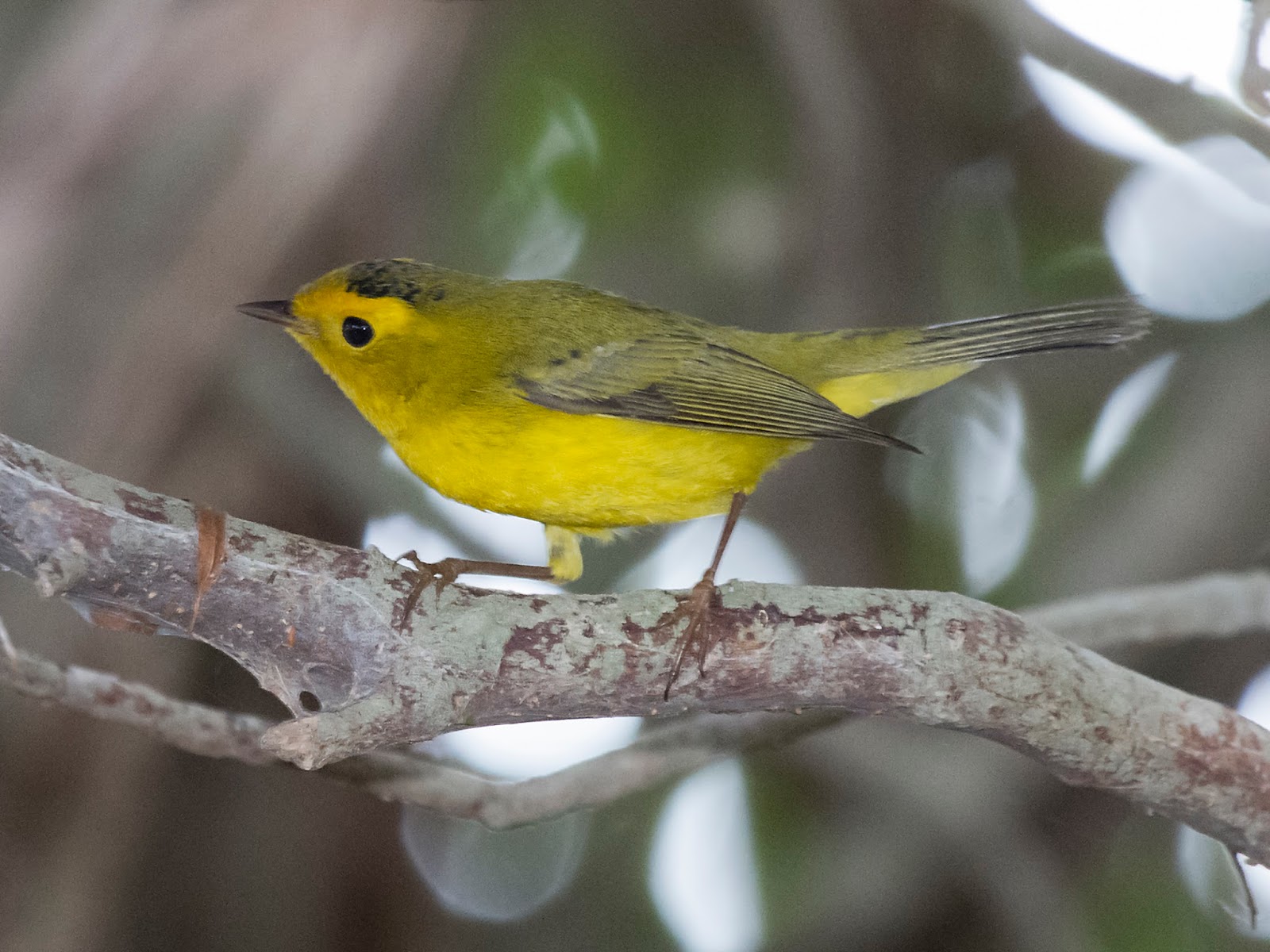 |
| ISO-3200, 400mm, f/8, 1/160sec, FEC -2.0 |
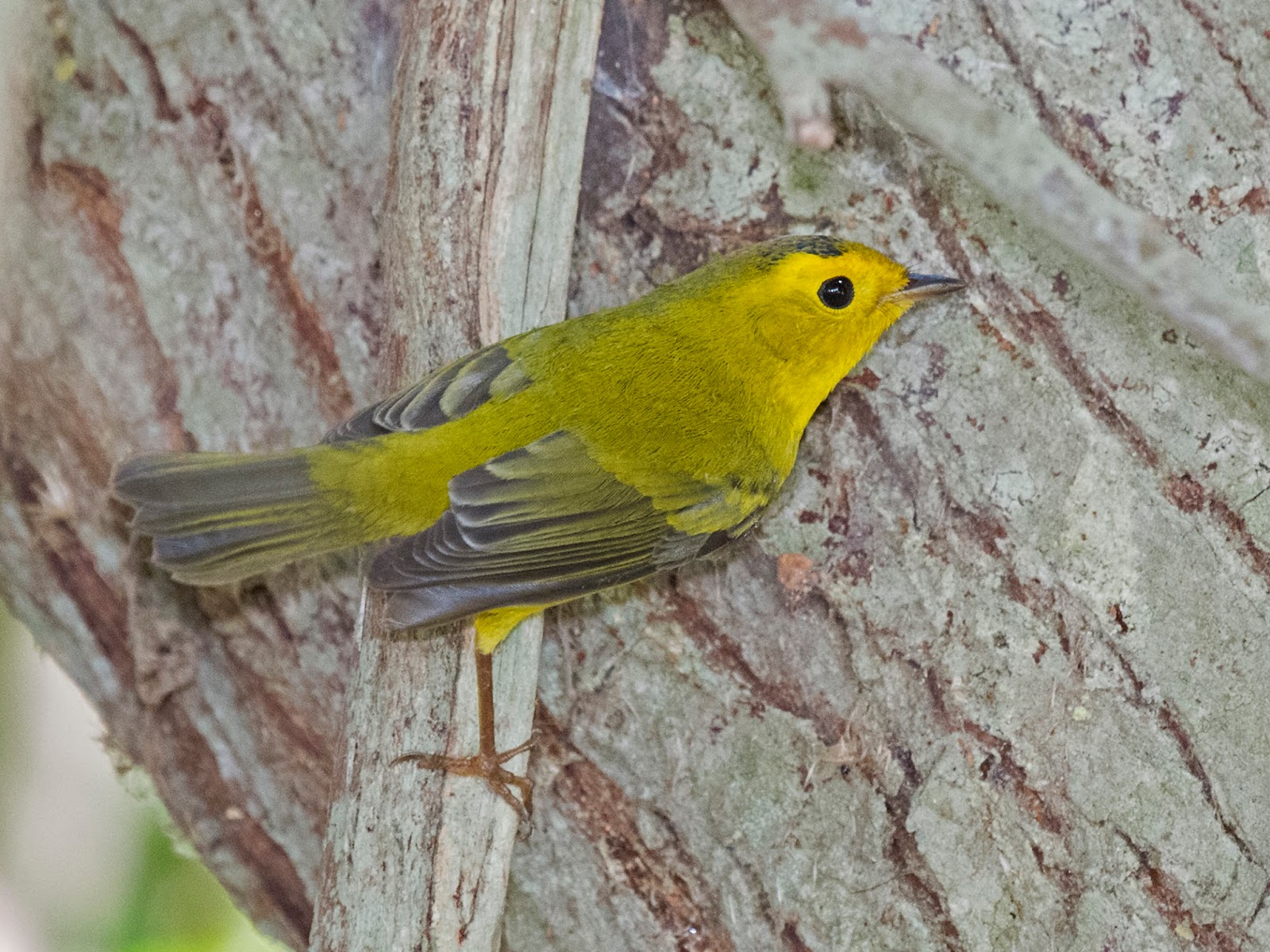 |
| ISO-3200, 400mm, f/8, 1/100sec, FEC -2.0 |
Yellow Warbler -YWAR - This bird foraged in the same thicket and same manner as the Wilson's. I had a hard time with identification due to the lack of obvious field marks. It had low contrast yellow and olive shading, a pale eye ring and muted wing bars. At first I thought it might be a female Wilson's. However, it lacked the bright supercillium. In the end, the yellow I saw in the underside of the tail feathers convinced me it was a Yellow Warbler in its dull Fall plumage.
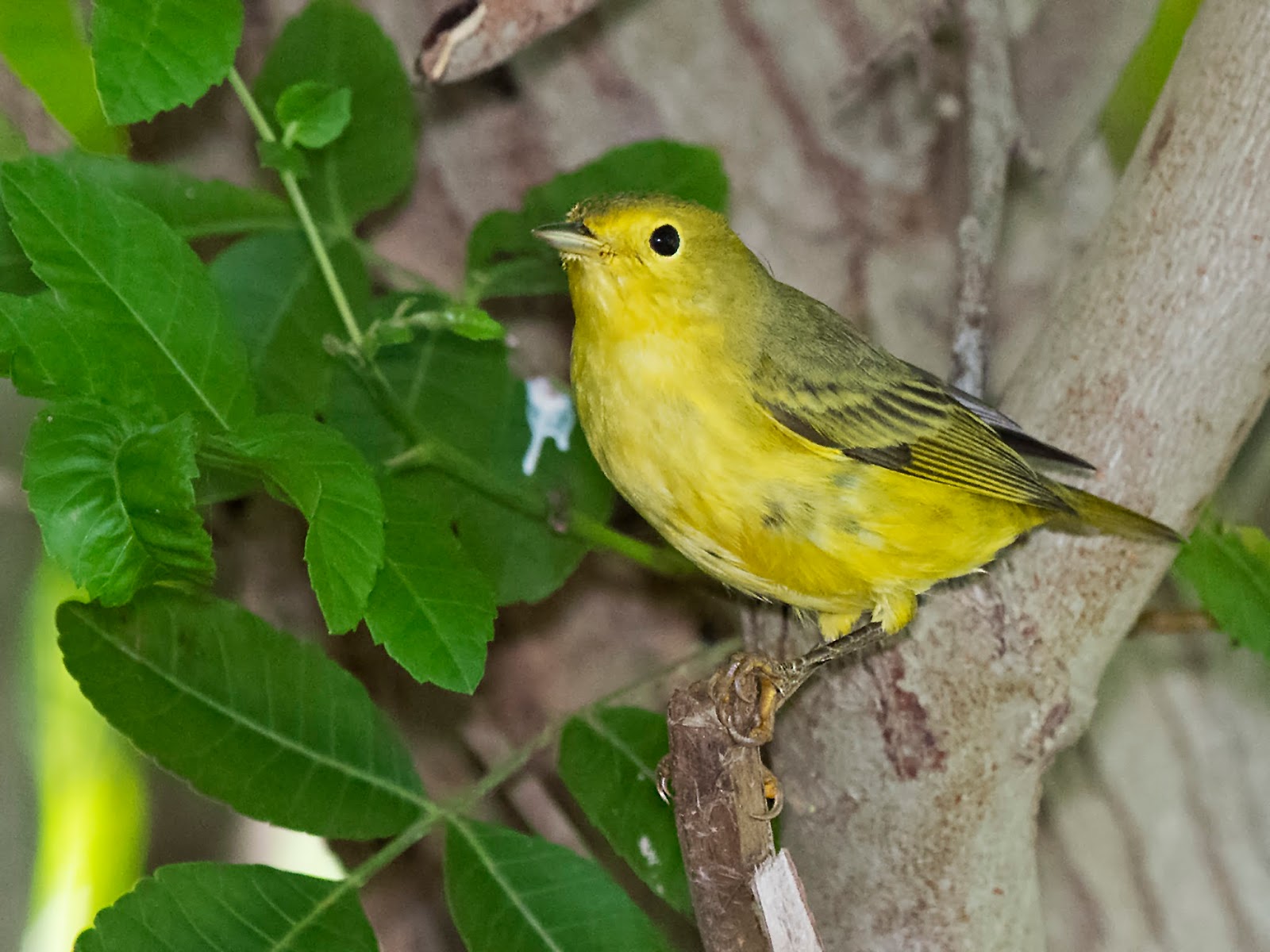 |
| ISO-3200, 400mm, f/8, 1/200sec, FEC -2.0 |
 |
| ISO-1600, 400mm, f/7.1, 1/125sec, FEC -2.0 |
Black-throated Green Warbler - BTNW - I first saw this bird on Thursday and did a double-take thinking it was a Golden-cheeked Warbler ... hang on, wrong season, wrong habitat. On closer look, the check patches were olive and more spread out identifying it as a Black-throated Green, another new species for me. Unlike the Yellow and Wilson's, this bird foraged in the lower branches of the large trees next to the picnic table and did not venture into the boggy thicket. On Saturday, it remained in viewing range for nearly an hour.
 |
| ISO-1600, 400mm, f/8, 1/1000sec, FEC -2.0 |
 |
| ISO-1600, 380mm, f/8, 1/250sec, EC +0.7, FEC -2.0 |
Canada Warbler - CAWA - This bird was not too difficult to identify. It had a low contrast gray back with no wing bars, a yellow underside and a pronounced necklace, even in its muted Fall plumage. The bright white eye ring and yellow supralores clinch the identification. I only saw this elusive species twice - two different birds, I think - both times low in the boggy thicket. It only stayed in view very briefly.
 |
| ISO-1600, 400mm, f/7.1, 1/320sec, FEC -2.0 |
 |
| ISO-1600, 400mm, f/7.1, 1/30sec, EC +0.3, FEC -2.0 |
 |
| ISO-1600, 400mm, f/7.1, 1/40sec, EC +0.3, FEC -2.0 |
Northern Parula - NOPA - Yet another new species for me. It had very distinct coloration, even in Fall plumage. The obvious distinguishing features were the bluish upper with olive back patch, yellow throat and breast, and bold white broken eye arcs. Like the Black-throated Green, this bird foraged systematically in the large trees and stayed visible for a long time.
 |
| ISO-3200, 400mm, f/8, 1/160sec, FEC -2.0 |
 |
| ISO-3200, 400mm, f/8, 1/160sec, FEC -2.0 |
Magnolia Warbler - MAWA - This bird had me confused for the longest time. At first, I thought it was another Canada Warbler due to the eye ring, the general gray and yellow shading, and the faded necklace. However, this bird had distinct wing bars and lacked the yellow supralores. On the other hand, it had a slightly green back, white belly and vent, and wing bars similar to the Parula. However, it did not have the broken white arcs around the eye. The clincher was the distinct pattern on the underside of the tail feathers which is listed as diagnostic of the Magnolia Warbler. This bird foraged in the larger trees in a similar manner to the Parula.
 |
| ISO-1600, 400mm, f/8, 1/80sec, FEC -2.0 |
 |
| ISO-3200, 400mm, f/8, 1/1000sec, FEC -2.0 |
American Redstart - AMRE - On Saturday, after the Hawk Watch festival, we went back to LTBC for a quick session before the rain storms came in. I was thrilled to get yet another new warbler. The yellow shoulder and tail feather patches were very distinctive, as was the initial impression of a chocolate colored back. I saw at least two of these, one with yellow patches and one with apricot patches. I don't know if these were females or first-year males. This bird behaved very differently from the other warblers. When perched it pivoted its tail side to side quickly. It did not forage along the branches but flew from tree to tree, sometimes diving down and back up like a flycatcher. It also has nose bristles like a flycatcher so I am guessing it catches insects on the wing.
 |
| ISO-1600, 400mm, f/8, 1/125sec, EC +0.7, FEC -2.0 |
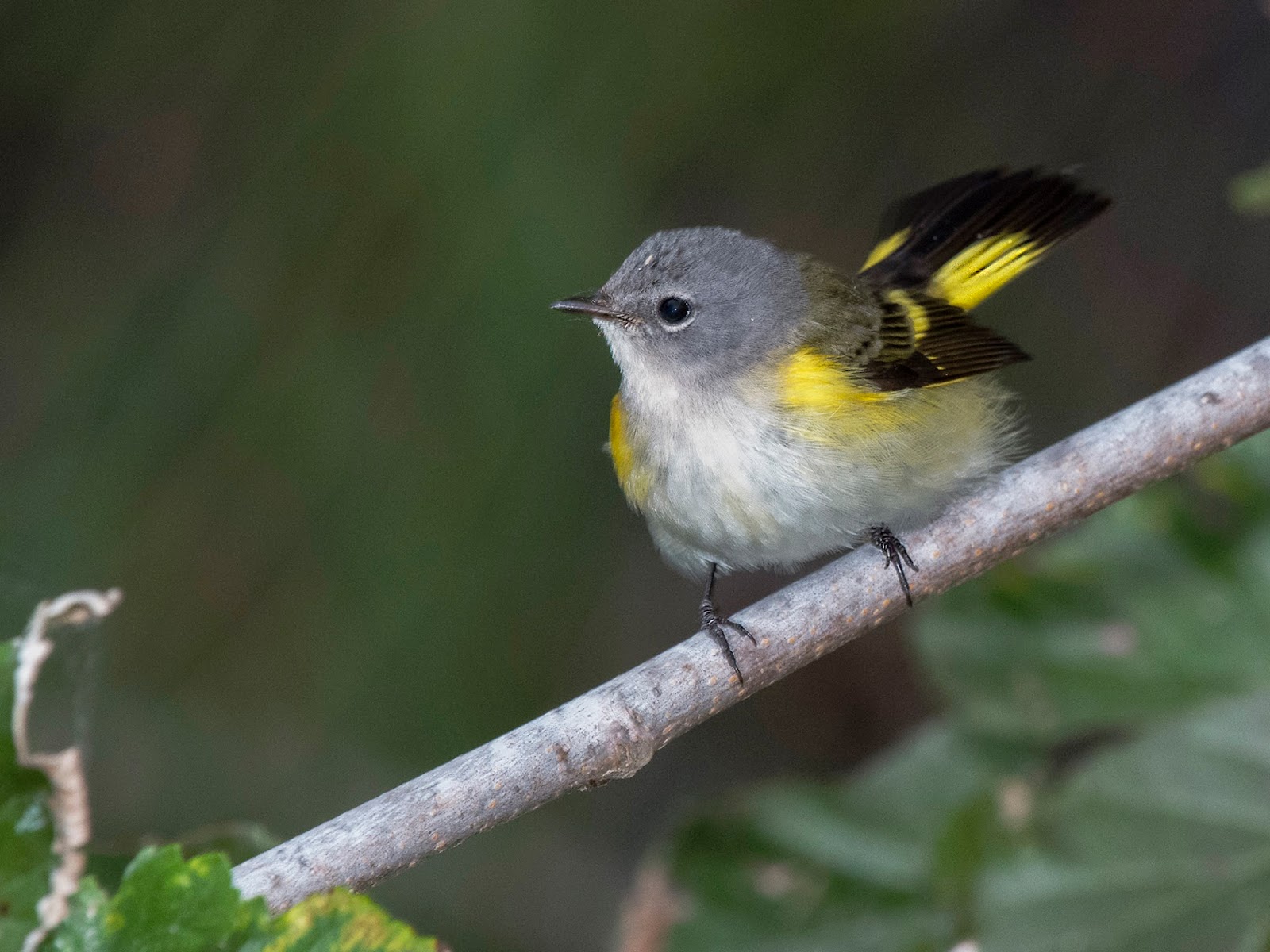 |
| ISO-1600, 400mm, f/9, 1/40sec, EC +0.3, FEC -2.0 |
White-eyed Vireo - WEVI - This is not a warbler but pretty enough to be one. As usual, I heard it many times before I saw it recognizing its distinct "Quick with the Beer Check" call from my experiences with it last Spring. I had also heard a number of these at Goose Island State Park. The bold yellow spectacles and wing bars were unmistakable. However, this one was a juvenile and lacked the bright white iris. However, iff you look closely at the pictures, you can see the dark gray in the iris that will brighten up next spring. This vireo made a brief visual appearance on Saturday. Of all the birds, this is the one that seems to be most observant my presence, cocking its head to look at me as my camera flashed.
 |
| ISO-1600, 400mm, f/9, 1/100sec, EC +0.3, FEC -2.0 |
 |
| ISO-1600, 400mm, f/9, 1/100sec, EC +0.3, FEC -2.0 |
 |
| ISO-1600, 400mm, f/9, 1/100sec, EC +0.3, FEC -2.0 |
Empidonax Flycatcher Species - Along with the various warblers, several flycatchers made an appearance in the thicket and low leafy bushes in the boggy area. I have not yet made an identification and did not hear their calls to help with the process. As these were taken an 90 minutes apart, I am not even sure if they are the same individual or even species. Based on the range maps, the likely options are
Yellow-bellied,
Acadian,
Willow,
Alder, and
Least flycatchers. Given the weak eye ring, the
Willow and
Alder flycatchers are the most likely. An
Eastern Wood-Pewee would be another possibility with the long beak but the primary wing projections do not look long enough.
 |
| ISO-1600, 400mm, f/8, 1/100sec, FEC -2.0 |
 |
| ISO-3200, 400mm, f/8, 1/200sec, FEC -2.0 |
All images were taken with a
Canon 60Da,
Canon EF 100-400mm f/4.5-5.6L IS, and
Canon Speedlite 430EX II flash with a
Better Beamer flash tele-extender. In identifying these new warblers, In addition to the
Sibley Guide to Birds, I relied heavily on
The Warbler Guide, by Tom Stephenson and Scott Whittle, which we acquired recently and which I highly recommend.















